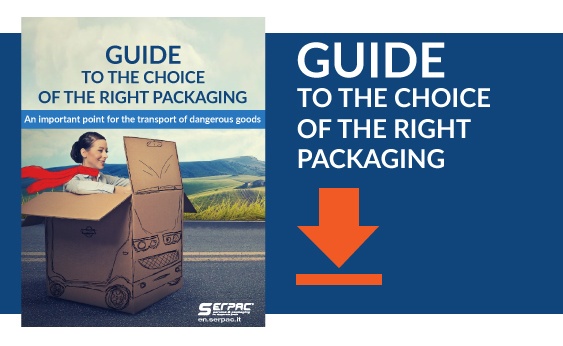Packaging for dangerous goods: What to do if not UN approved

The transport of dangerous goods must be done in packaging that has been accredited a UN certificate of approval (with the exception of shipments in Exempt Quantity, Limited Quantity and special cases).
Transporting dangerous goods without approved packaging would be to say the least, careless. In fact, the regulations to obtain a certification have been put in place with the aim of guaranteeing maximum safety, and making the packaging requirements uniform for the various modes of transport.
Fortunately, it is highly unlikely that dangerous goods are able to travel inside unsuitable packaging: not meeting the regulations normally causes the shipment to be stopped. If on one hand, it doesn’t show the risks associated with this type of transport, on the other hand it can translate into fines and inevitable delays in delivery.
Certifying one’s packaging is therefore a necessary step, one which is performed by qualified Certification Authorities, following rigorous tests carried out in accredited test laboratories.
The certification is issued in the form of a document which shows all the relevant specifications. For example, in certifications issued for UN 4G approved boxes (which can only be used in combination with the types of internal packaging with which they have been tested), the approval certificate indicates the permitted inner packagings.
To check whether a packaging has been approved or not, just check that the approval mark is printed clearly and permanently. This is always shown as a circled UN symbol followed by other codes.
However, the presence of abbreviations and codes is not enough. Specific checks must be carried out for each case, as even a simple distraction could lead to making mistakes even in good faith. This is the case, for example, of packaging that seems to be in order because it has been approved for certain modes of transport, but in fact isn’t, as the dangerous goods which are contained in the package are about to travel in a different mode for which they have been certified.
Getting the packagings approved
What do you if you are not yet in compliance with the regulations?
To be sure to take the right steps, even if you have some knowledge of the subject, it is advisable to contact an expert, who can provide assistance for every aspect related to the approval process: design, analysis of materials, supply of approved packaging and carry out the strict tests to obtain the UN certification.
In fact, the tests required to get the a certification are particularly rigorous: drop tests, stacking tests and compression tests.
The first thing to take into consideration is the characteristics of the product to be transported, and, thanks to a technical support service, it is straightforward to get a UN certificate of approval for one’s dangerous goods packaging. Jerrycans, crates, bags, boxes, drums and IBCs, following thorough testing, have all the credentials to be transported in any mode: by land ADR, railway RID, inland waterway ADN, sea IMDG and ICAO / IATA air.
Certificates are usually issued forty-five to sixty days after testing.
What to do once you have the UN certification
When a packaging for dangerous goods has been approved, it can be shipped with the peace of mind that comes from being within the law. In the event of checks or the unfortunate hypothesis of an accident during transport, the goods will be in order and safe, inside their UN approved packaging.
Before each shipment, it is still advisable to check the following:
-
The internal containers correspond, when using an external packaging which has been approved with a specific internal packaging;
-
The outer packaging is approved for the mode of transport used (land, railway, sea, waterway and air);
-
The package once ready to be sent respects all the requirements defined by the packaging instructions, and the weight indicated on the UN approval mark: the gross weight must be less than or equal to that indicated on the mark.
UN certificates of approval do not expire; however, they are subject to renewal on an annual basis, which is issued following the positive outcome of the production control required by the various regulations (ADR, RID, ADN, IMDG, ICAO / IATA).
